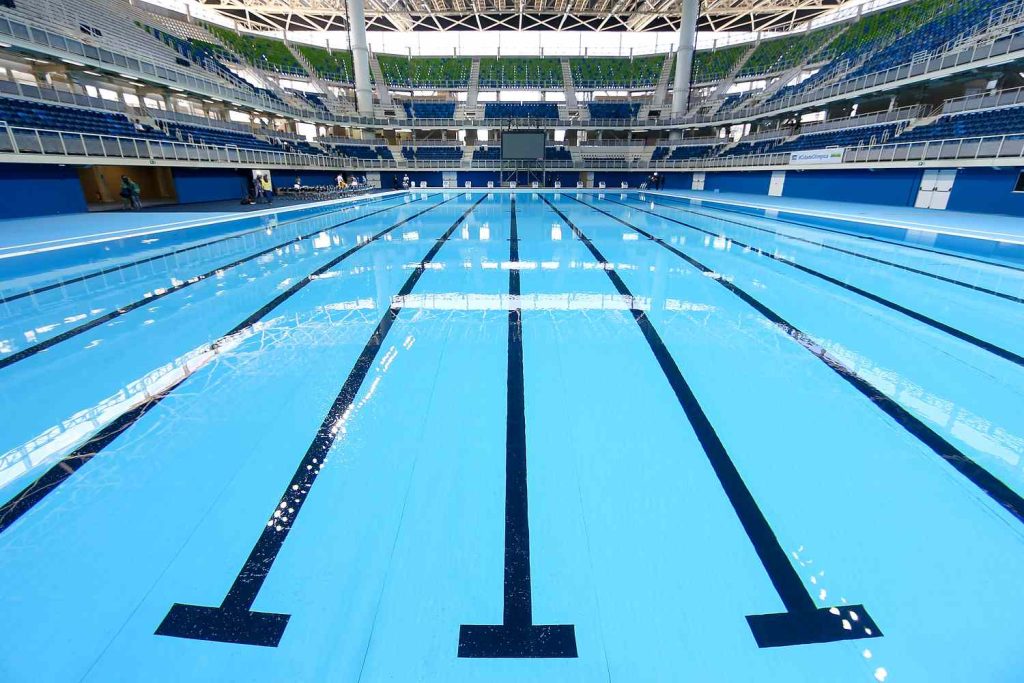Have you ever wondered how big an Olympic-size swimming pool is? Olympic swimming pools are not your average backyard pools. They are massive structures designed to meet the specific requirements of competitive swimming events. In this article, we will dive into the dimensions and other fascinating details of an Olympic-size pool.
Dimensions of an Olympic-size pool
An Olympic-size pool has specific dimensions that must be followed to meet the official standards set by the International Olympic Committee (IOC). The standard dimensions for an Olympic pool are:
| Length | Width | Depth |
|---|---|---|
| 50 meters | 25 meters | 2 meters |
Yes, you read that right! An Olympic pool is a whopping 50 meters long, 25 meters wide, and has a minimum depth of 2 meters throughout the entire pool. These dimensions provide enough space for swimmers to showcase their skills and compete at the highest level.

Credit: en.wikipedia.org
Why are Olympic pools so big?
So, why are Olympic pools so big compared to your average neighborhood swimming pool? The answer lies in the need to accommodate multiple swimmers and maintain fairness during competitive events.
In swimming races, multiple swimmers compete against each other simultaneously. The large size of an Olympic pool allows for multiple lanes, usually between 8 and 10, so that each swimmer has their own dedicated lane. This ensures that there is no interference or collision between swimmers, providing a fair and equal opportunity for all competitors.
Additionally, the size of the pool plays a crucial role in determining the world records. The longer the pool, the more time it takes for a swimmer to complete a lap. This makes it easier to compare times across different events and swimming pools.
Other interesting facts about Olympic pools
Now that we understand the dimensions and purpose of an Olympic-size pool, let’s explore some other interesting facts:
- Olympic pools are typically made of concrete, with the bottom and sides painted white to enhance visibility for swimmers and officials.
- The water in an Olympic pool is usually kept at a temperature of around 25-28 degrees Celsius (77-82 degrees Fahrenheit) to ensure optimal swimming conditions.
- An Olympic pool can hold an astonishing amount of water, with a capacity of approximately 2.5 million liters!
- Swimming events in the Olympics take place in both indoor and outdoor pools, depending on the host city and venue.
- Olympic pools are equipped with advanced timing systems, including touchpads and underwater cameras, to accurately measure race times and determine winners.

Credit: www.youtube.com
Conclusion
Olympic-size pools are much larger than your average swimming pool, with dimensions of 50 meters in length, 25 meters in width, and a minimum depth of 2 meters. These pools are designed to accommodate multiple swimmers and ensure fair competition during Olympic events. The size of the pool also plays a crucial role in determining world records and provides optimal swimming conditions for athletes. The next time you watch the Olympics and see swimmers gliding through the water, you’ll have a better understanding of the immense size and significance of an Olympic-size pool.





